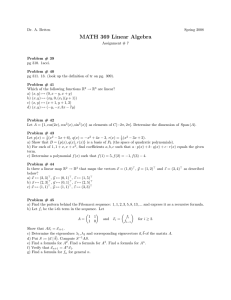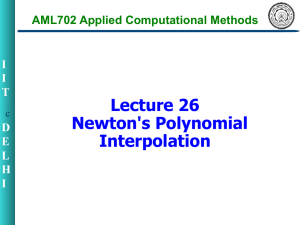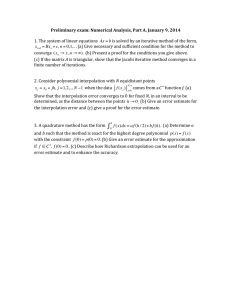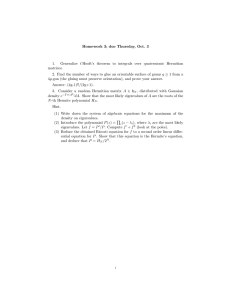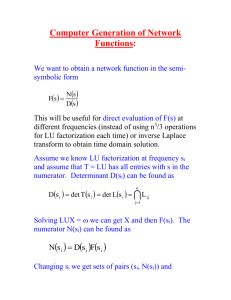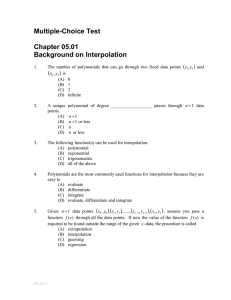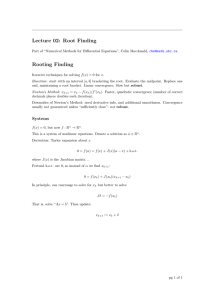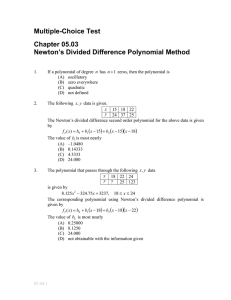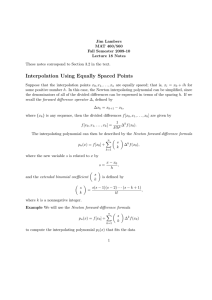Document 14462496
advertisement
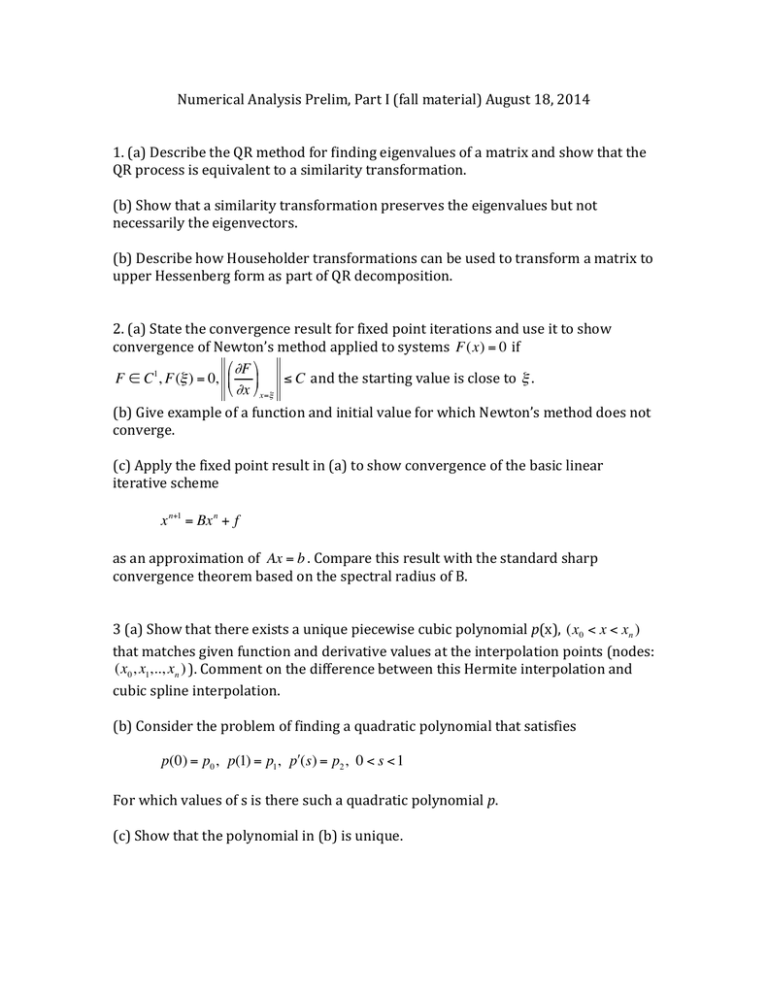
Numerical Analysis Prelim, Part I (fall material) August 18, 2014 € 1. (a) Describe the QR method for finding eigenvalues of a matrix and show that the QR process is equivalent to a similarity transformation. (b) Show that a similarity transformation preserves the eigenvalues but not necessarily the eigenvectors. (b) Describe how Householder transformations can be used to transform a matrix to upper Hessenberg form as part of QR decomposition. 2. (a) State the convergence result for fixed point iterations and use it to show convergence of Newton’s method applied to systems F(x) = 0 if % ∂F ( F ∈ C1, F(ξ ) = 0, ' * ≤ C and the starting value is close to ξ . & ∂x ) x=ξ € for which Newton’s method does not (b) Give example of a function and initial value converge. € (c) Apply the fixed point result in (a) to show convergence of the basic linear iterative scheme x n+1 = Bx n + f as an approximation of Ax = b . Compare this result with the standard sharp convergence theorem based on the spectral radius of B. 3 (a) Show that there exists a unique piecewise cubic polynomial p(x), (x0 < x < xn ) that matches given function and derivative values at the interpolation points (nodes: (x0 , x1,.., xn ) ). Comment on the difference between this Hermite interpolation and cubic spline interpolation. (b) Consider the problem of finding a quadratic polynomial that satisfies p(0) = p0 , p(1) = p1, p!(s) = p2 , 0 < s < 1 For which values of s is there such a quadratic polynomial p. (c) Show that the polynomial in (b) is unique.
